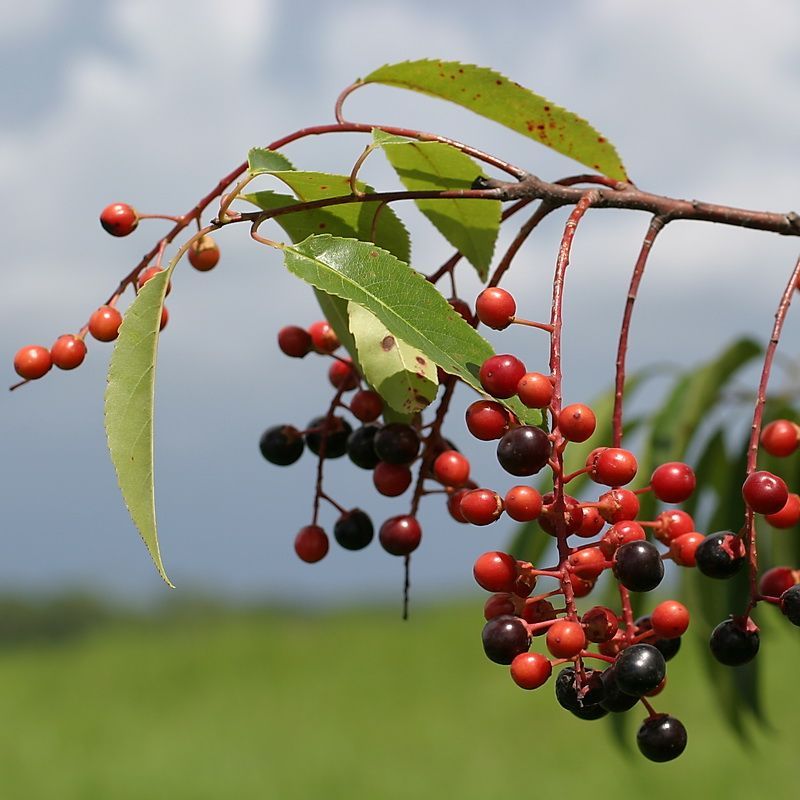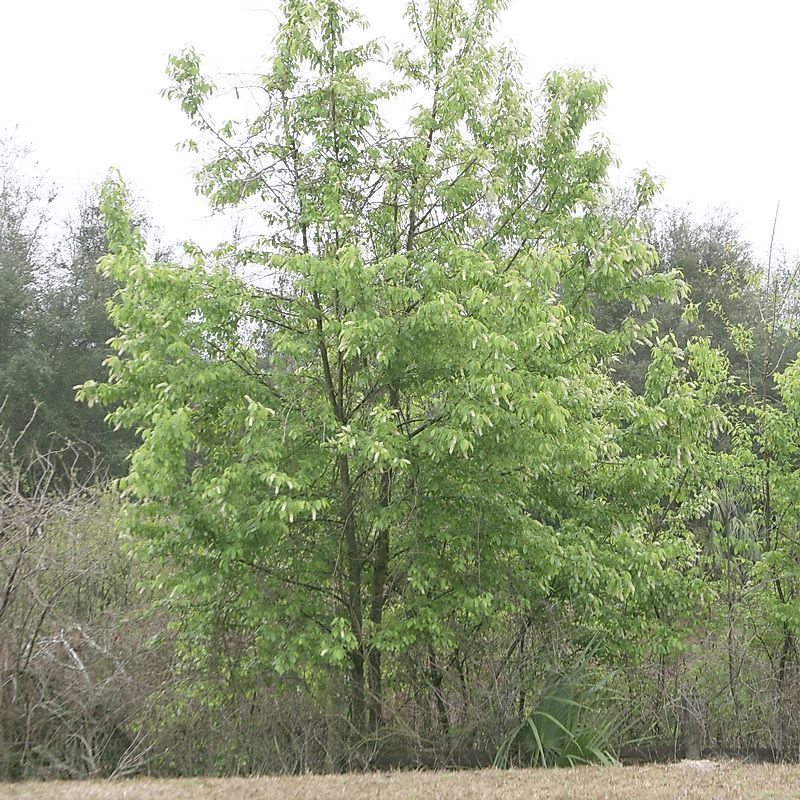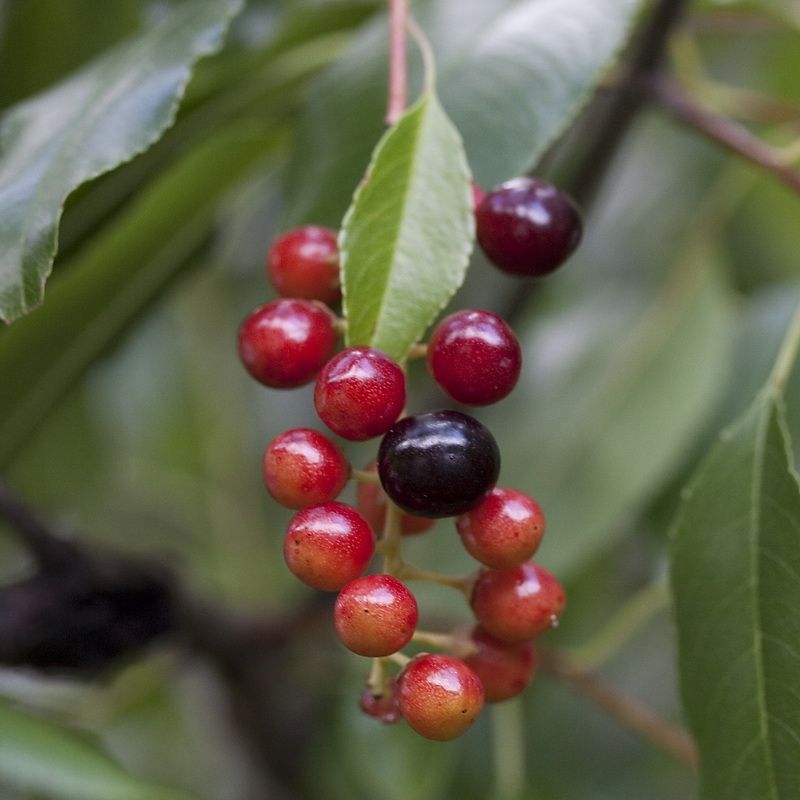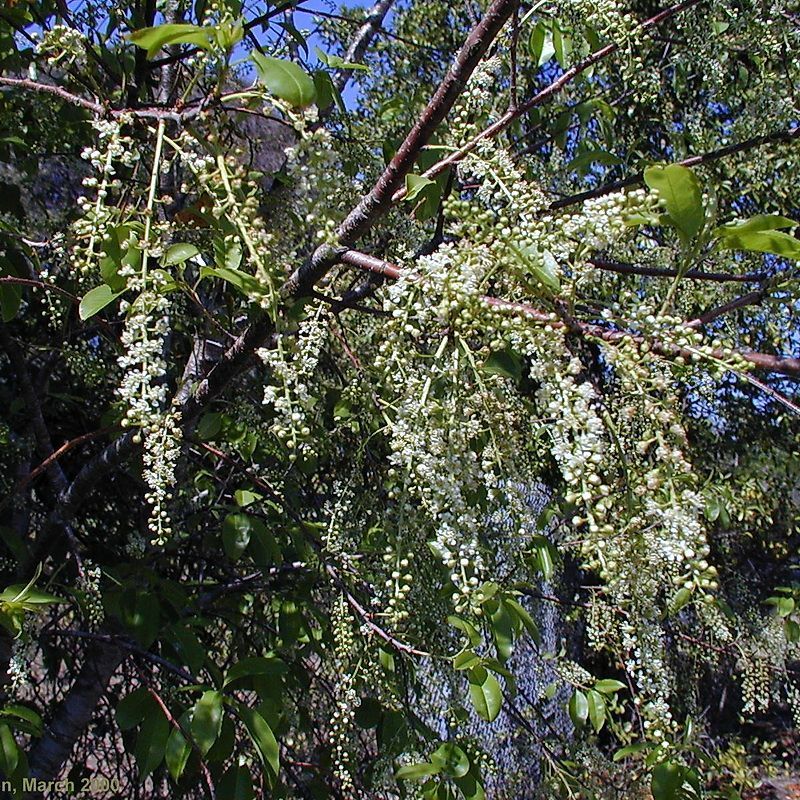FNPS Plant Database
Prunus serotina
Nomenclature
Common Name:
Synonym(s):
Genus species:
Family:
Rosaceae
Plant Specifics
Form:
Size:
Life Span:
Long-lived perennial
Flower Color:
Fruit Color:
Phenology:
Noted For:
Landscaping
Recommended Uses:
Considerations:
Availability:
Propagation:
Light:
Moisture Tolerance:
Always Flooded---------------------------------Extremely Dry
□□□□□□□□□□□□□□□□□□□□□■■■■■■■■■■■■■■■■■■□□□
Somewhat moist, no flooding -to- Very long very dry periods
Salt Water Flooding Tolerance:
Unknown
Salt Spray/Salty Soil Tolerance:
Moderate. Tolerant of salty wind and may get some salt spray.
Soil or Other Substrate:
Sand, Clay, Loam
Soil pH:
Suitable to Grow In:
8A,8B,9A,9B

USDA zones are based on the average annual extreme minimum winter temperature.
Don't know your zone? Click here to search by zip code.
Ecology
Wildlife:
Bees are pollinators.
Larval host for tiger swallowtail.
Birds and other animals eat the fruits. Birds are the primary disperser into old fields and hedge rows.
Native Habitats:
Natural Range in Florida:
Visit the USF Libraries Atlas of Florida Plants
Comments:
Ethnobotany:
General Comments:
The range of Prunus serotina includes most of eastern North America as far north as southern Canada. It extends west into Texas and there are spotty occurrences as far west as Arizona. In Florida, the range appears to be continuous as far south as the central peninsula after which it disappears, a pattern generally associated with temperature. This species should grow well down to the central peninsula.
Some people consider this to be a weed tree. This author has it in my "field" where it is thriving and very welcome. It is an early successional tree, but not a problem plant. The tree lis an important component of deciduous forests in north Florida and eastern North America.
Citations:
Deyrup, Mark; Jayanthi Edirisinghe, and Beth Norden. 2002. The diversity and floral hosts of bees at the Archbold Biological Station, Florida (Hymenoptera: Apoidea). Insecta Mundi. 544.
https://digitalcommons.unl.edu/insectamundi/544
Haehle, Robert G. and Joan Brookwell. 1999. Native Florida Plants. Gulf Publishing Company. Houston, TX.
Huegel, Craig, N. 2010. Native plant landscaping for Florida wildlife. University Press of Florida, Gainesville, FL. (wildlife uses)
Minno, Marc and Maria Minno. 1999. Florida Butterfly Gardening. University Press of Florida.
Nelson, Gil. 2003. Florida's Best Landscape Plants. Association of Florida Native Nurseries.
Tras, Pamela. 2001. Gardening for Florida's butterflies. Great Outdoors Publishing, St. Petersburg, FL.
Burns, Russell M.; Honkala, Barbara H.; [Technical coordinators] 1990. Silvics of North America: Volume 2. Hardwoods. United States Department of Agriculture (USDA), Forest Service, Agriculture Handbook 654 ( https://www.fs.usda.gov/treesearch/pubs/1548 ).
Osorio, Rufino. 2001. A gardener's guide to Florida's native plants. University Press of Florida, Gainesville, FL.
University of Tennessee Extension Service. Desired Ph Range and salt tolerance of common nursery plants. https://extension.tennessee.edu/mtnpi/Documents/handouts/Fertility/Desired-pH-Range-List.pdf accessed 2021.
Wunderlin, R. P., B. F. Hansen, A. R. Franck, and F. B. Essig. 2021. Atlas of Florida Plants ( http://florida.plantatlas.usf.edu /). Institute for Systematic Botany, University of South Florida, Tampa.












